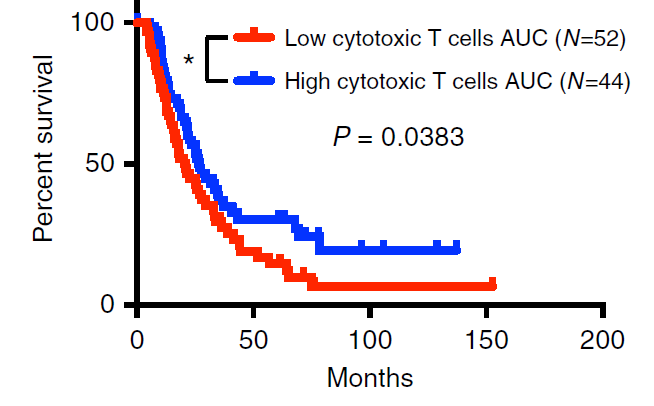Spatial computation of intratumoral T cells correlates with survival of patients with pancreatic cancer
Julienne L. Carstens, Pedro Correa de Sampaio, Dalu Yang, Souptik Barua, Huamin Wang, Arvind Rao, James P. Allison, Valerie S. LeBleu and Raghu Kalluri, “Spatial computation of intratumoral T cells correlates with survival of patients with pancreatic cancer,” Nature Communications, April 2017.
TEAM MEMBERS
Souptik Barua, Graduate Student, ECE, Rice University
Dr. Arvind Rao, Professor, Bioinformatics and Computational Biology, M.D Anderson Cancer Center; ECE, Rice University
Dr. Raghu Kalluri, Professsor, Cancer Biology, M.D Anderson Cancer Center; Bioengineering, Rice University
THE PROBLEM: The exact nature and dynamics of pancreatic ductal adenocarcinoma (PDAC) immune composition remains largely unknown. The goal of the study was to understand and characterize the spatial tumor-immune interactions occurring in PDAC, to determine optimal immunotherapy treatments. In addition to simple statistics such as counts, we present a novel application of spatial analysis developed in ecological statistics for the PDAC problem.
OUR SOLUTION: We used a bivariate Ripley’s L-function to characterize the spatial distribution of intratumoral T cells with respect to cancer cells. A high infiltration of an immune cell type results in a high Area Under the Curve (AUC) of the L-function curve, and vice-versa. We further investigated the potential of using the L-function AUC as an independent predictor of patient outcome.
MAJOR FINDINGS: Cancer cell-adjacent cytotoxic T cells correlate with survival Spatial distribution of cytotoxic Tcells in proximity to cancer cells (within ) correlates with increased overall patient survival. Further exploration of our spatial framework may improve our understanding of how specific stromal composition could impact T-cell activity, with potential impact on the optimization of immune-modulatory therapies.


